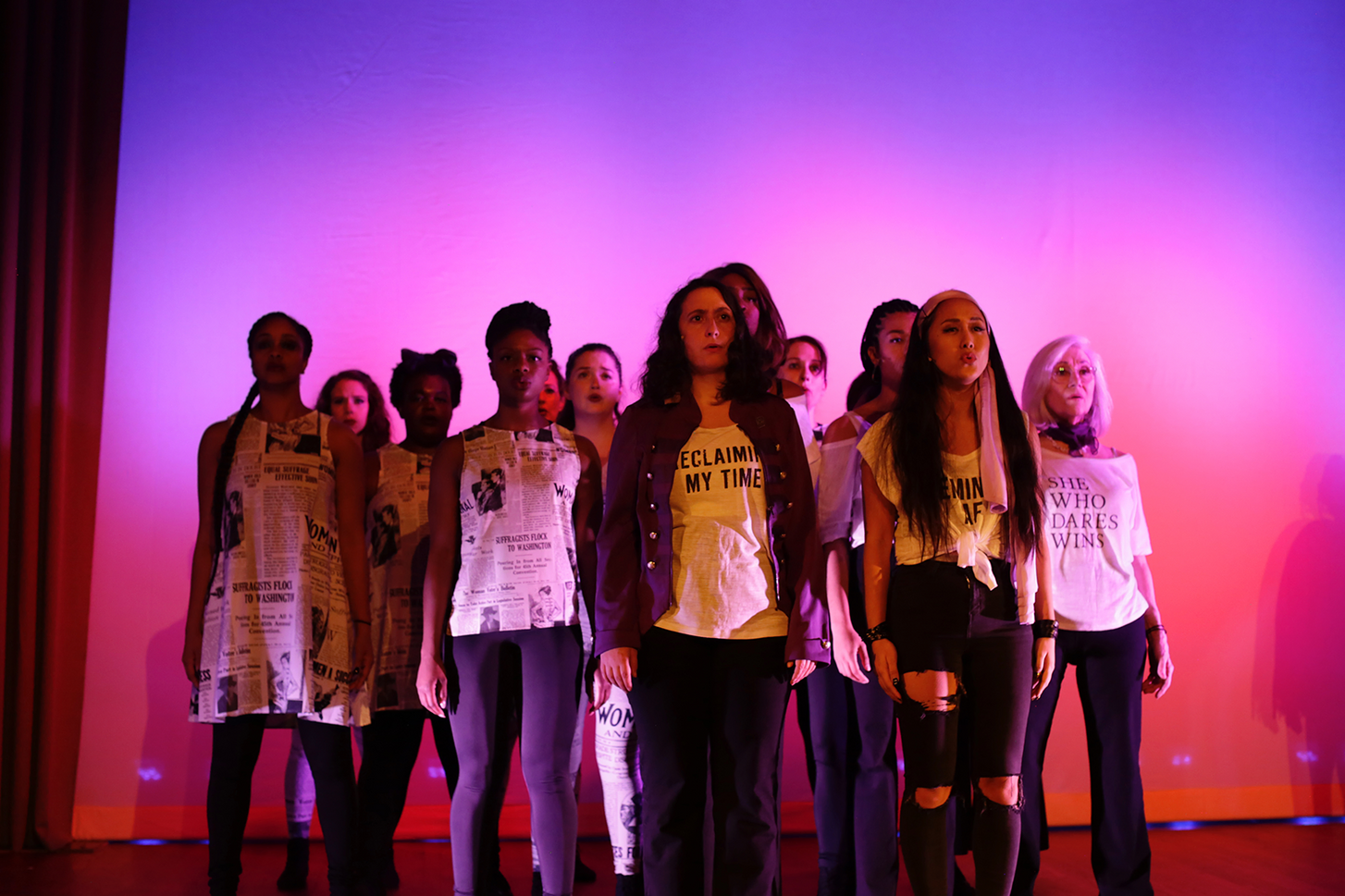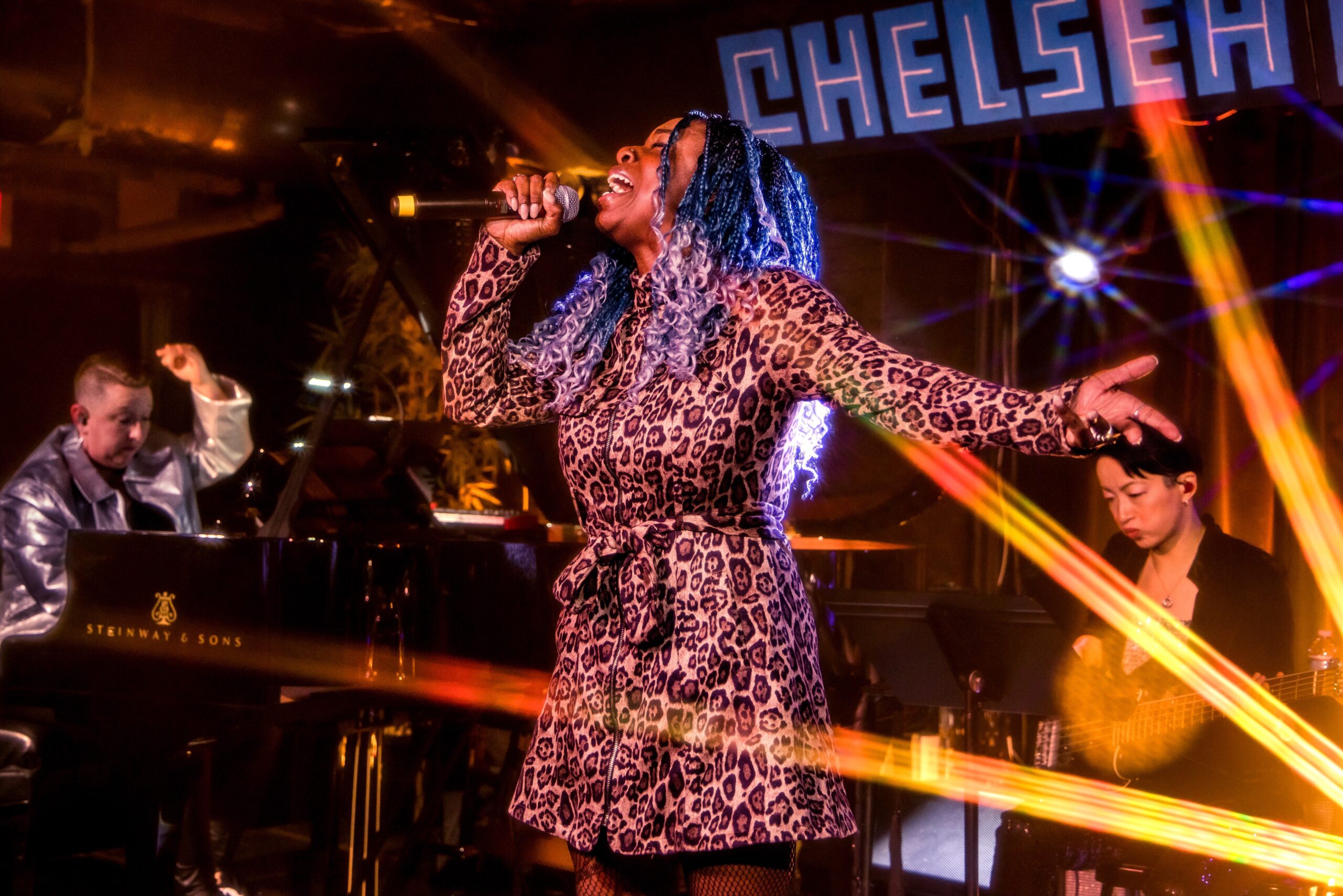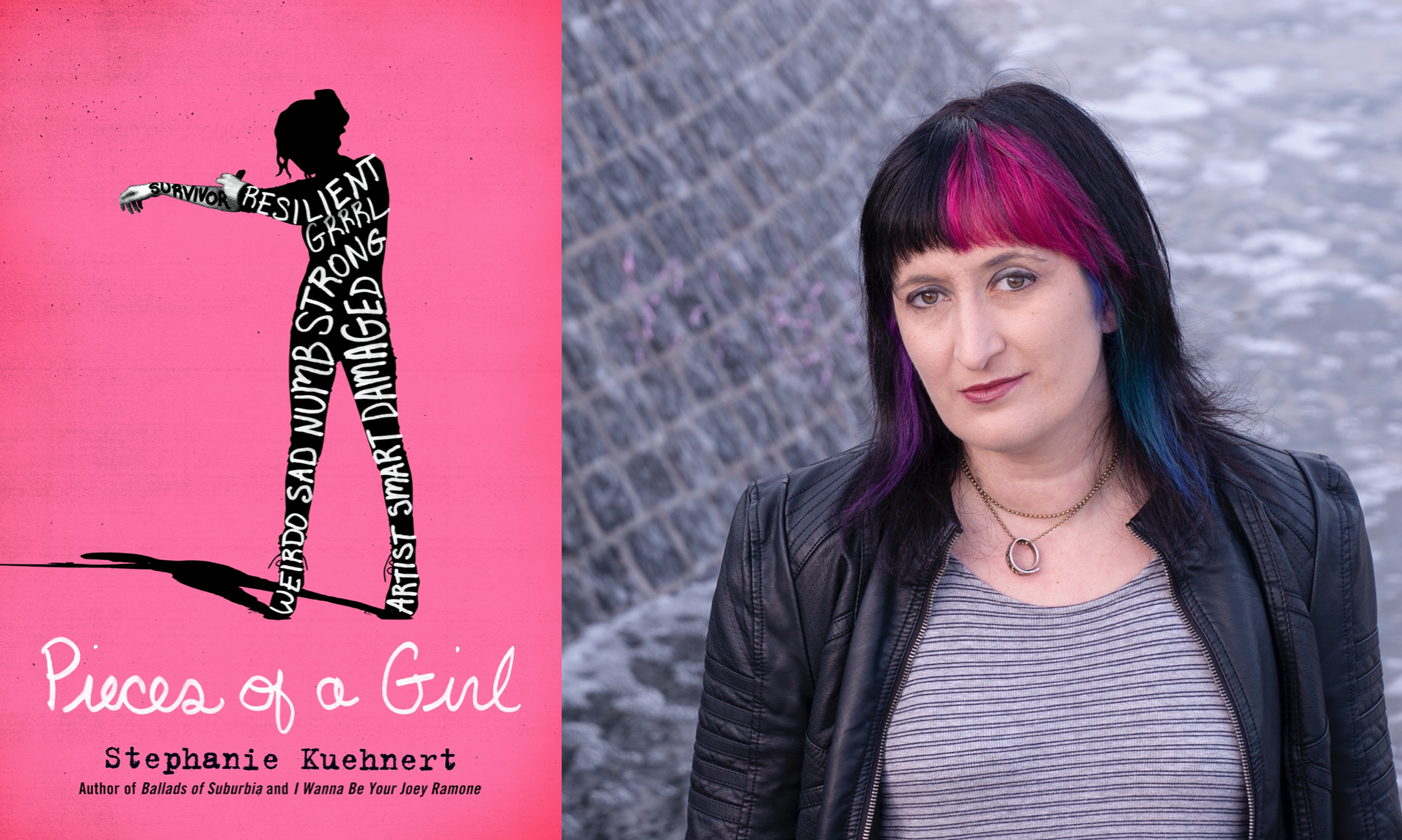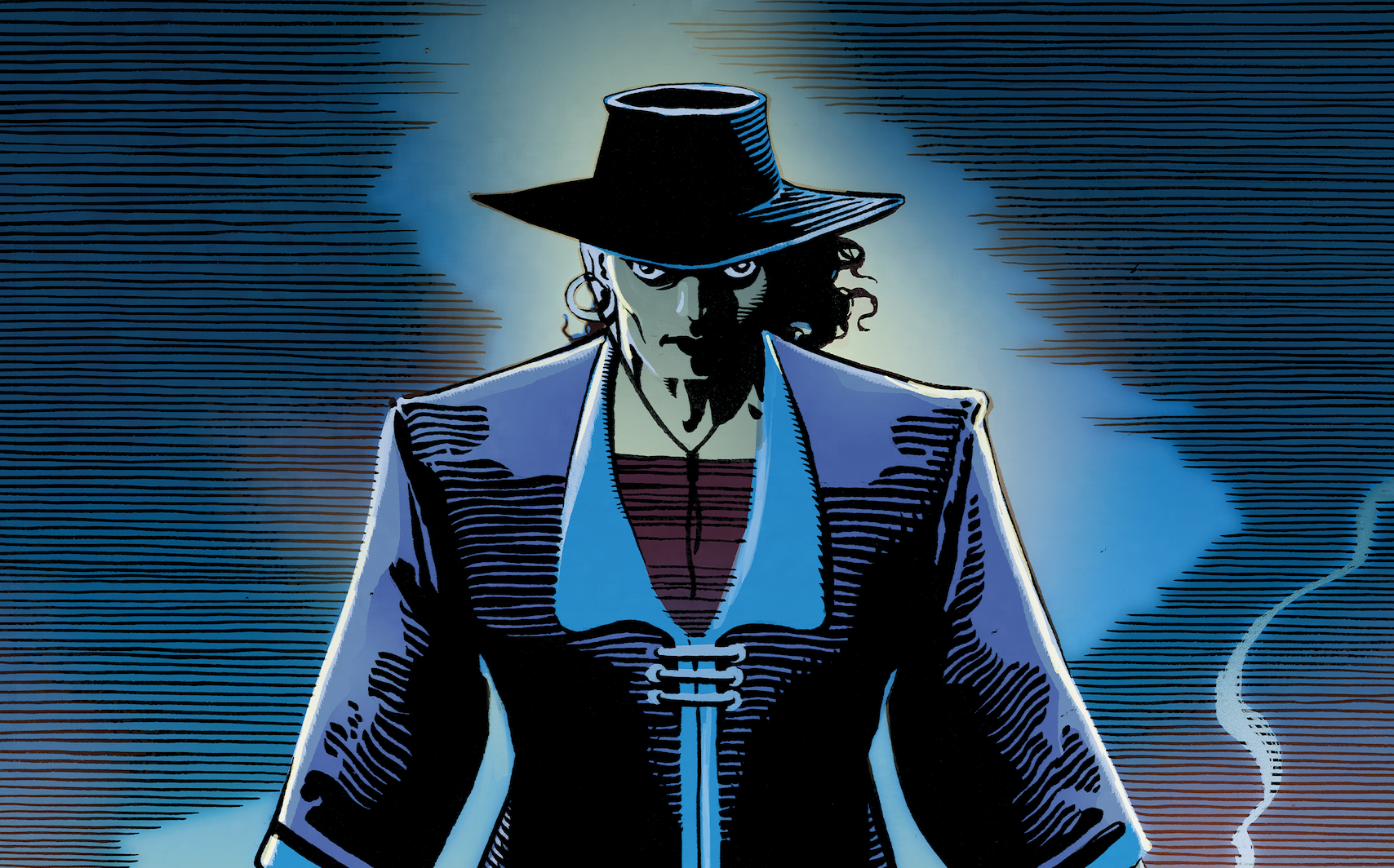
Many of us put a lot of pride and effort into maintaining our hair styles. Some consider it a crowning achievement to have an enviable ‘do. Hair can become cultural markers (the 90’s “Rachel” hairstyle), signify a potential political attitude (the anarchy often associated with a mohawk in the 60’s), and even become the subject of racism or discrimination (think the mission and motivation behind the revolutionary CROWN Act). It’s clear that hair plays a rather outsized role in both society, and our individual lives. But what happens when something disrupts our hair journey, forcing us to shift our perspective or learn something new about ourselves?
A new documentary is taking viewers behind the science of hair in an entertaining and informative journey, through the eyes of two hosts who have had to confront their own hair struggles throughout their lives. ‘Hairy Tales’ which premiered on Canada’s CBC network March 7, showcases renowned journalist Sarika Cullis-Suzuki, known for her work focusing on science, conservation and environmentalism, and award-winning science communicator, PhD researcher, startup founder Anthony Morgan as they lead viewers through common hair dilemmas that resonate with audiences worldwide. For Sarika, audiences get to see her grapple with postpartum hair loss by talking to a range of experts and being candid about her own experience. The featured guests and experts that Sarika and Anthony interview share their personal experiences while untangling new research and old myths.
From bad hair days to genetic predispositions, the documentary sheds light on the struggles we face in our quest for perfect hair. Anthony and Sarika meet with family members (Sarika’s father is David Suzuki who is a well-known and revered environmental activist and science broadcaster in Canada) and even a childhood barber to understand how genetics shape hair growth, texture, and color.
Helming this fascinating documentary is director Leora Eisen – a highly acclaimed filmmaker known for her insightful storytelling and compelling narratives. With a keen eye for detail and a passion for science communication, Leora, along with co-director Chris Strikes, brings Hairy Tales to life, offering audiences a captivating exploration of the science of hair.
For anyone going through their own follicle challenges, or those who simply want to get familiar with the science behind our hair, scroll on below for our interview with Sarika and Leora, who share their own hair struggles, and what message they hope audiences will take away after watching ‘Hairy Tales’.
Sarika Cullis-Suzuki
We are excited to see the upcoming release of Hairy Tales! How did you initially get involved in this project, and what drew you to the subject matter of hair?
Leora Eisen, the film’s Director, brought this idea to The Nature of Things, and we all thought it was a great topic! It seems regardless of if we have hair or not, whether we love our hair or loathe it, we can all comment on it. Many of us spend a lot of time and effort and money on our hair- from gels to wigs to dyes to medications, you name it- and yet there are still some fundamental things we don’t know about it.
I’m very ignorant on the subject and had some very basic questions: Why do I have curly hair? Why does my dad have black hair, my mum blonde, and I’m a brunette? Why did my sister’s hair go straight after she shaved it off? It was also the first doc Anthony and I had ever co-hosted, which made it quite special, and we both brought very different hair experiences and questions on the journey.
What experiences from your own life did you draw from for this documentary?
My primary question was: why is my hair curly? I know I get the curly gene from my dad, but why does he have curly hair when no one in his family does? I also wanted to know: why does your hair change after you have kids? And will it change back? One of the things we talked about on the doc is how many of us long for hair that we don’t have. When I was a teen, I used to straighten my curly hair (sometimes using an iron), because I thought straight hair looked so smooth and fancy… and frizz-free! Now with three kids of my own, I think it’s pretty amazing that their hair is so different from each other, and hope they don’t get too hung up on fads and are happy with what they have.

As someone who has worked extensively on TV and documentaries that cover science, the environment and conservation, how was the ‘Hairy Tales’ experience different?
Hair is a topic that seems to elicit a lot of conversation: seems we all have some kind of hair story! It’s the best when you can talk about a topic with everyone and anyone you meet. While we cover some neat science in this episode, the tone of the film is also fun and playful, and we were able to include our families in some scenes. So it was a joy to film.
As a journalist known for her authoritative voice in the documentary space, what was it like to be vulnerable about your postpartum experience on camera?
I think many mothers can relate to losing hair while pregnant, so I didn’t feel like I was revealing anything too shocking. I also think a host’s personal stories (when appropriate) can add to a film, because it brings a real curiosity into the doc, which can help drive a story. Plus, I’m just happy I have any hair left!
Can you tell us more about working with co-directors Leora & Chris?
It was the first time I worked on a film with either of them, and it was a wonderful experience. I was only lucky enough to be in one scene with both Leora and Chris together, and it was really neat to have two sets of eyes and perspectives on that shoot. They worked really well together. The rest of the time I was shooting with Leora, who has made many Nature of Things documentaries in the past; she is extremely skilled and committed and it was exciting to watch her work and make her vision come to life. She had to juggle a LOT with this shoot, but she never lost her cool or forgot what it was all about. We had a great time.

What were some of the most interesting or eye-opening conversations you had while making this film, whether on-camera or behind the scenes?
What I loved about this film was that you didn’t have to be an expert to have an insight or a story about hair. It seems to be a universally engaging topic, so while the experts had a lot to say on the subject, so did everyone else: the crew, our families, everyone we spoke to. Even though hair, or a lack of thereof, connects us, it’s also very personal and specific: each of us relates to hair in a different way.
Besides learning that some peoples’ hair is so strong, they can literally pull cars with it (evolutionarily, how did that evolve?!), one of the most surprising things I learned was that my dad, back when he was in high school, wanted straight hair (just like I did!), so he used to slick it back every day with some kind of strong gel. I guess we’re all susceptible to the trends of the day.
Why do you think hair is such a source of confidence but also insecurity for many people? And do you think we are even aware of how impactful it is in our daily lives?
Unfortunately in the dominant Western culture of today, much of our perceived beauty is tied up in youth; and when we age and our hair gets thinner or turns grey or falls out, we tend to feel less attractive. These insecurities are fed by the ridiculous amounts of marketing, telling us we must dye/straighten/relax/volumize/curl/grow/etc. our hair. We are constantly being told that our hair needs fixing!
I suppose we take it seriously because hair has the opportunity to convey quite a bit about oneself: how much time you spend on yourself, how much money you have, how healthy you are, how on trend you are, and whether or not you ride a bike (helmet hair, the bane of my existence!). Hair seems to have the ability to make you feel amazing, or like bursting into tears. But we shouldn’t get too stressed about it (after all, stress can turn your hair grey, or make it fall out!)

Has your perspective changed after making this film, hearing from the range of scientists and experts featured?
What really blew me away was how common hair loss and balding is for women; it’s not something we tend to hear or talk about, and yet so many of us are affected. I think I’m more accepting of my hair after learning more about it, and also as I get older, realizing that I might not always have it!
What do you hope audiences will feel impacted by the most, after watching Hairy Tales?
I hope the take-away is that our hair- or lack of it- shouldn’t define us. I hope people understand that all of us have hair struggles, and that it shouldn’t be the end of the world. In fact, there is a lot of profit being made off our so-called hair woes, so we shouldn’t be intimidated by that pressure! We don’t generally think of hair as the canary in the coal mines when it comes to human health, but hair health can actually be an indicator of a changing environment. But while some things might be out of our control, there are things we can do to give our hair its best chance at shining: staying healthy, maintaining a good diet, limiting stress and harmful treatments, and most of all accepting what we have.

Leora Eisen
Where did your film & TV career begin, and how did it lead you to directing?
I started out as a story editor on Canada’s national morning show back in 1983. I was 21 and fresh out of journalism school. I basically phoned the network news VP’s office every single day until he agreed to grant me a job interview. Back in those days you could actually meet bosses in person! I researched and booked guests on a wide range of topics – everything from arms control treaties to Hollywood celebrities. But what I loved most was being in the field with a camera crew and crafting a compelling story in the edit suite. That led to directing longer features on a current affairs program, and eventually establishing a freelance career directing and producing documentaries.
As a journalist and documentarian, what kind of stories or subject matter are you typically drawn to?
I’m drawn to stories that provide insight into human behavior and help us make sense of the world around us. Often something happening in my own life sparks an idea. For example, my daughter and many of her friends were fostering dogs. I wanted to understand why millennials were so involved in the dog rescue movement, so I made a feature called Rescuing Rex.
I’m also drawn to people whose lives are radically different from my own. Like many journalists, I’m a naturally curious person. I’m so lucky that my job entails gaining access into other worlds and life experiences. What is it like to be a wildfire fighter, organ transplant donor, Maasai warrior, sperm whale researcher or twin separated at birth? The common thread is that we’re all just humans trying to figure things out.
What were some of the most surprising things you learned in the process of making this film?
Hair science is anything but cut and dry! Before making this film, I had no idea that the stuff on top of our heads is so complicated. We think that it’s all about genetics – and DNA does play a big role in determining our follicles’ fate – but there are other factors involved in hair growth, loss, color and texture. Your individual immune system, hormones, stress response, medications and diet can all impact your hair. As a result, there is no “one size fits all” magic potion to cure all hair woes.
I was surprised to learn that hair regenerates itself! That’s remarkable and pretty unique in human biology. Hair grows in cycles, and our follicles are like mini-factories pumping out new hairs to replace the old ones that fall out.
I was also surprised to discover just how limited some of the scientific studies actually are. Until recently, much of the medical research was focused on single groups (usually Caucasian) or genders. That could be because hair is dismissed as a “cosmetic” concern and not taken seriously enough in the scientific community. Yet hair can be a visible sign of general health and the aging process.

Can you talk about the process of working with your co-director Chris Strikes? What does it mean to be in a co-directing partnership?
Chris is a talented young Black director who joined our Hairy Tales team early in the process as part of a CBC (Canada’s public broadcaster) initiative to enable diverse filmmakers to gain experience making science documentaries. It was a win-win situation! He learned more about various aspects of production, from developing a budget to sourcing potential experts and characters, while I benefited from having another director with a creative vision and different perspective working with talent and crew on some of the shoots.
How did you ensure the film represents a wide range of perspectives and lived experiences?
Hairy Tales is the only documentary airing this season on The Nature of Things that features both hosts of the program – Anthony Morgan and Sarika Cullis-Suzuki. That’s by design; hair, or the lack of it, is a concern for both men and women. Anthony is Black and Sarika is part Japanese-Canadian and a mom, so right off the bat, we were representing different perspectives and experiences. But from the moment researcher/producer Jackie Carlos and I began researching the film, we actively sought out scientists and medical professionals from diverse backgrounds. Science is no longer the exclusive domain of older white men, and it’s essential to reflect that.
A previous interview you did with the Toronto Guardian describes you as a filmmaker who likes to uncover hidden stories. Can you expand more on this and why it is important to you?
Rather than telling stories ripped straight from today’s headlines or focusing on the most sensational material (i.e. true crime), I enjoy delving deeper into what makes us who we are. You can find some extraordinary stories hidden just below the surface in ordinary, everyday life.
What do you hope audiences will love most about Hairy Tales, and keep thinking about as they go about their lives afterward?
I hope audiences love that we untangle hair science with a sense of humor. After all, bad hair days are universal. As a dermatologist says in the film, “I don’t know anyone who doesn’t have hair issues!” Rather than comparing ourselves to social media gurus with perfect coifs, maybe we can learn to appreciate our own unique ‘dos.
You can watch ‘Hairy Tales’ on CBC’s ‘The Nature of Things’ in Canada, hosted by Sarika Cullis-Suzuki and Anthony Morgan.

















